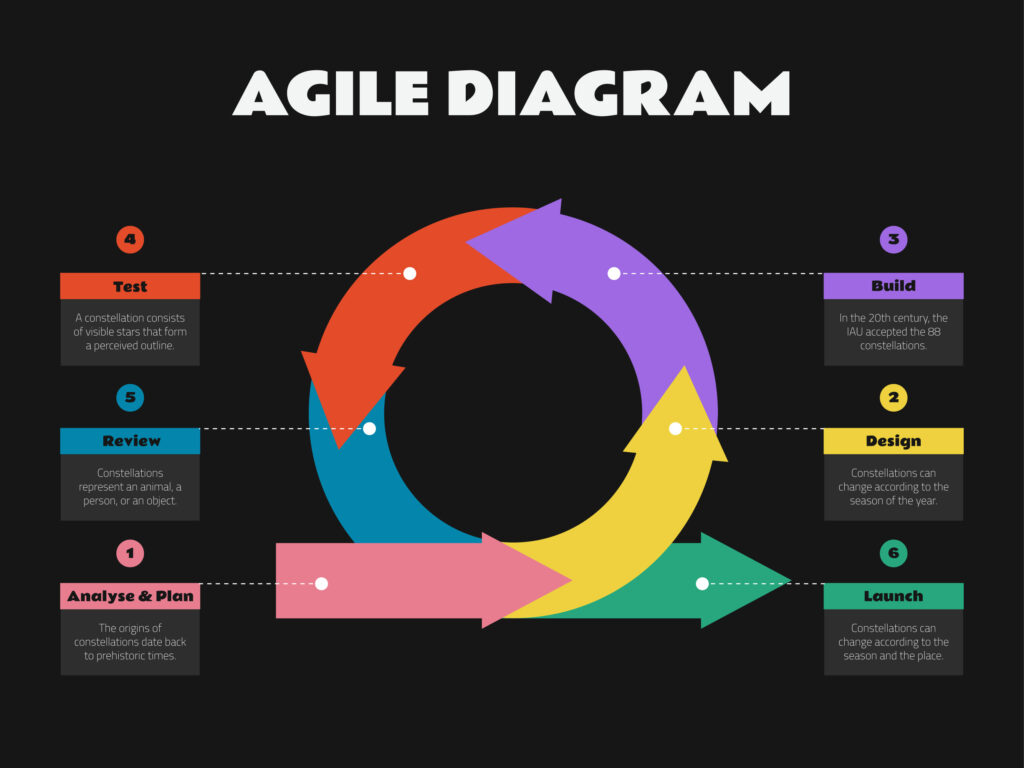In the world of electronic hardware development, traditional processes often follow a rigid, linear approach. This means months, or even years, of designing, prototyping, testing, and refining before a product is market-ready. However, what if there was a better way? A way that reduces risk, increases flexibility, and allows for real-time adjustments? Enter Agile development—a methodology originally crafted for software development, but one that is now transforming hardware development as well.

What is Agile Development?
Agile development is a methodology that breaks down a project into small, manageable pieces known as “iterations” or “sprints.” Each sprint typically lasts a few weeks, and during that time, teams work to produce a tangible result, whether it’s a design improvement, a functional prototype, or a tested feature. The goal is continuous improvement, with each iteration building upon the last.
Unlike traditional models, such as the Waterfall method, which moves in a sequential, step-by-step process (i.e., design first, prototype later, and test only after everything else is done), Agile is cyclical and dynamic. This allows teams to test assumptions early, get feedback faster, and adjust the course of development in real-time.
Why Agile Works for Hardware Development
- Faster Time to Market
- In today’s competitive landscape, speed matters. By breaking the development process into smaller, more manageable chunks, teams can address issues sooner, make corrections faster, and ultimately get products to market quicker. Instead of waiting until the very end to catch design flaws, Agile allows for constant feedback and refinement, keeping projects on track and reducing time-consuming rework.
- Flexibility in a Changing Market
- One of the biggest advantages of Agile is its flexibility. Markets shift, customer needs evolve, and new technologies emerge—all of which can render a traditional development process obsolete. With Agile, hardware developers can pivot their focus as necessary without derailing the entire project. This adaptability is especially valuable in industries like electronics, where technological advancements happen rapidly.
- Reduced Risk
- By iterating and testing frequently, Agile allows teams to identify potential problems early. Traditional methods often lead to late-stage surprises that can be costly and time-consuming to fix. Agile’s continuous feedback loops help mitigate risks by tackling issues as they arise, ensuring that each version of the product is more refined than the last.
- Customer-Centric Development
- Agile isn’t just about efficiency—it’s about delivering a product that truly meets the needs of customers. Through continuous iteration, developers can receive ongoing feedback from stakeholders, allowing for better alignment with customer expectations. This customer-centric approach ensures that the final product is not only functional but also desirable in the marketplace.
- Cross-Functional Collaboration
- Agile encourages collaboration across departments and teams. Designers, engineers, and product managers work together more closely, making communication more streamlined. This cross-functional approach ensures that everyone is aligned and focused on the same objectives, reducing miscommunication and increasing overall efficiency.
How Amtech Implements Agile for Hardware Development
At Amtech, we’ve fully embraced the Agile methodology to revolutionize the way we approach electronic hardware development. Here’s how we implement it:
- Iterative Sprints: We divide our projects into smaller cycles, allowing us to tackle challenges incrementally while keeping flexibility at the forefront.
- Real-Time Adjustments: By gathering feedback at every stage of development, we make real-time adjustments that lead to a more refined product with each iteration.
- Collaborative Teams: Our design, engineering, and production teams work hand-in-hand to ensure that all aspects of the project are aligned and on track.
- Customer Involvement: We actively engage our customers throughout the development process, gathering their insights and integrating their feedback to ensure the final product meets their needs.
Why Agile is the Future of Hardware Development
The Agile methodology has proven to be a game-changer in the software industry, and now it’s having a similar impact on hardware. In an era where speed, flexibility, and customer focus are paramount, Agile is reshaping the way electronic hardware is developed. For companies looking to stay competitive, adopting Agile could be the key to delivering better products, faster.
At Amtech, we believe that Agile is not just a methodology—it’s a mindset. It’s about being adaptable, proactive, and committed to continuous improvement. We’ve seen firsthand how this approach leads to lower risk, higher-quality products, and a better experience for both our teams and our customers.
As the pace of technological advancement accelerates, Agile will continue to grow in importance, allowing hardware developers to stay nimble and responsive to the ever-evolving demands of the industry.
Want to learn more about how Agile development can improve your hardware projects? Let’s connect. Reach out today and discover how Amtech’s Agile approach can take your product from concept to reality, faster than you ever thought possible.
#AgileDevelopment #HardwareInnovation #ElectronicsDevelopment #Amtech #ContinuousImprovement #CustomerCentric #InnovationLeadership
